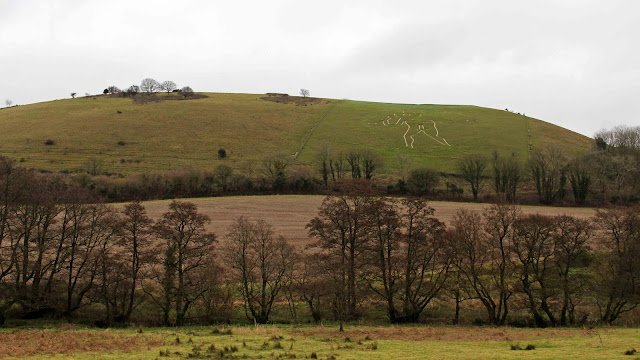Not being English, I didn’t understand the
significance of Shaftesbury’s Gold Hill. A quick google revealed that Shaftesbury
had been founded as a fortified settlement (a burgh) way back in 880 by King
Alfred the Great, and that the picture-postcard cottages of Gold Hill had been
built around the 17th century.
But it was bread-making firm Hovis and now-world-famous
film director Ridley Scott who forever implanted Gold Hill in the psyche of the
English when they chose this location for their 1973 television advertisement.
The ad (you can see it here) was subsequently voted ‘Britain's
Gold Hill has also featured in episodes of
those classic English comedies The Two
Ronnies and Only Fools and Horses,
in films, and on the covers of books – heck, it even has its own website!
 |
| This modern bench is very well placed and a rather beautiful work of art. |
As you can see, the apparently magnificent
views of the beautiful Dorset countryside were
somewhat obscured on the day I visited but I rather liked the evocative atmosphere
created by the fog. It gave more of a sense of the hill’s long history.
 |
| At the bottom, looking back up. |
My guide promised me a giant Hovis loaf but
it was nowhere to be seen – apparently it was getting a bit mouldy around the
edges and needed re-crusting, as this article explains.
















